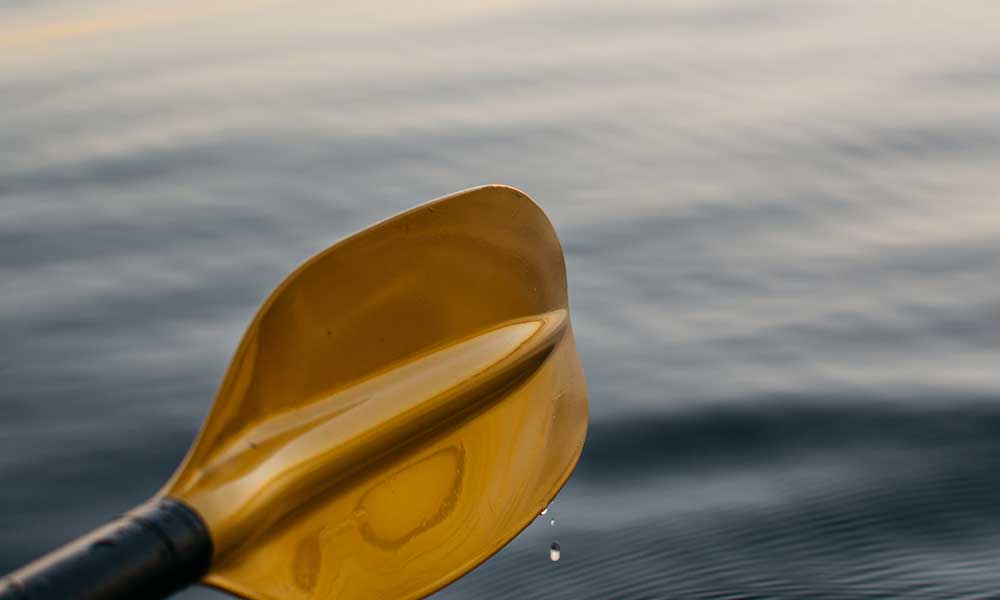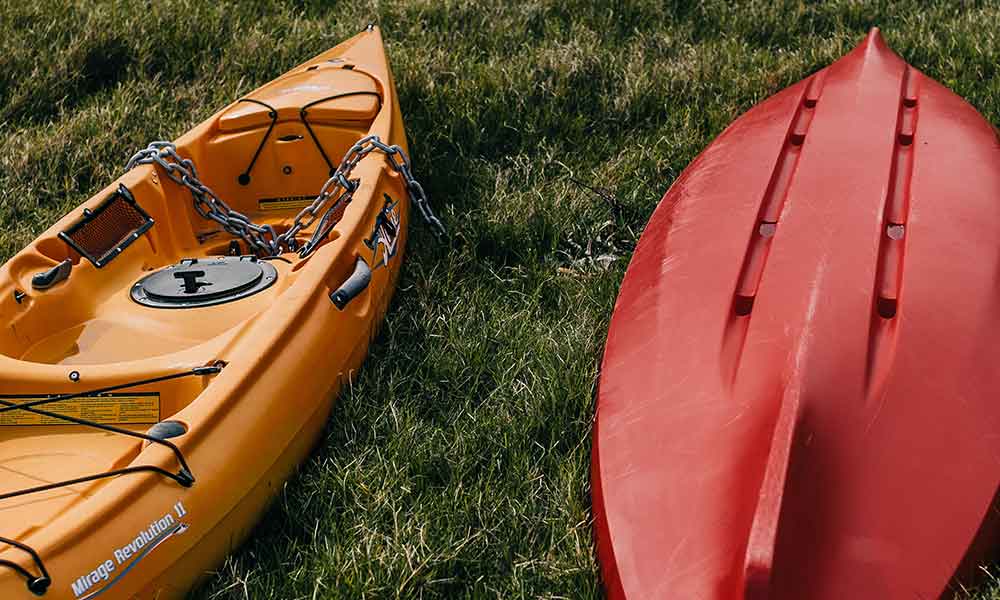Kayaking is an excellent method to get exercise while enjoying a recreational activity. You can kayak alone, with a buddy, participate in races, or enjoy fishing! Considering the many options for kayaking, it is not surprising that people new to the activity have many questions! We will answer some of the questions we hear most frequently regarding this pastime.
Beginners to the activity of kayaking have many questions relating to safety, rules and regulations, best practices, and even places to kayak. Our kayak FAQ guide answers many of these questions. Even seasoned kayakers may find this information valuable and interesting!
It is sometimes difficult to find the answers you need to specific questions about an activity, which is why we have gathered some of the most frequent questions asked about kayaking into one location. Let’s kick off with some of these questions and provide some enlightening answers!
How Long Is A Kayak?
The length of a kayak is relevant for storage, transport, and the type of kayaking you intend to do. Seagoing kayaks are generally longer than river kayaks, fishing kayaks, or white-water kayaks.
The average general length of a fishing kayak is 10-feet, but the length will differ depending on the kayak’s intended use, the waters the kayak is designed for, and your physical build. The length can range from 6-feet to 16-feet.
Recreational kayak lengths range from 9-feet to around 12-feet. Shorter kayaks are more maneuverable, but longer kayaks are faster and can hold more gear.
Tandem kayaks built for two people only average at a length of 12-feet but can range from 10 to 14-feet.
Most sea kayaks are built for touring and for coping with the demands of the sea. Consequently, these kayaks are between 12 and 17-feet long.
Racing kayaks are built for flat water and are designed to be narrow and long to increase speed in the water. Their length ranges from 15 to 18-feet.
How Much Does A Kayak Weigh?
The kayak’s weight will be dependent on the material the kayak is made from and the intended purpose. Racing kayaks will be lighter than other kayak types, which helps with their speed.
The average 10-foot fishing kayak tips the scale at about 55-pounds and is easily lifted by one person to launch in the water or get onto the roof rack of your car.
Larger kayaks can come in between 60 and 100-pounds depending on the type of kayak and its intended use.
How Many Calories Do You Burn Kayaking?
The number of calories you burn during kayaking will be determined by how vigorous your exercise will be while kayaking.
Racing in kayaks, negotiating rapids in a kayak, and kayaking for sport will burn more calories than recreational kayaking.
The Harvard Medical School performed studies that established that a person weighing 125-pounds will burn 150 calories every 30-minutes, or 300 calories every hour while kayaking.
A 155-pound person will burn 360 calories an hour, and a 185-pound person will burn up 420 calories in the same duration and intensity level of kayaking.
Is A Kayak A Boat?
A kayak is considered to be a boat. The kayak has its roots in the small boats built by the Inuit people of Greenland, constructed from animal skins. The boats were used by the Inuit people for hunting in lakes, rivers, and coastal waters.
The designs have changed and been adapted to the modern boats we know as kayaks today. Legislation regarding the use of boats for some states includes kayaks under their classification of “unpowered boats.”
Do You Need A Boating License For A Kayak?
A boating license is the equivalent of a driving license for a car. It is to educate boat operators on the rules for negotiating waterways. The license generally pertains to motorized boats.
A boating license is not required to operate a kayak. The rules may change in your state if you add a trolling motor or electric motor to your kayak, in which case a boating license may be a requirement.
To continue our analogy, if a boat is like a car and requires a boating license, a kayak is like a bicycle and does not require a license to operate as long as it remains non-motorized.
Do You Have To Register A Kayak? (Ask Your State Agency)
It is unnecessary to hold a boating license to operate a non-motorized kayak, but some states require that your kayak be registered with local authorities before using it on public waters.
If registration is required, the local authority will issue you with a registration number that must be displayed on your kayak.
Not all states have this requirement, so you need to check with your local authorities to clarify this matter.
Is Kayaking Good Exercise?
Kayaking is very good exercise if you treat the activity as exercise. If you gently paddle around, your exercise will be minimal, but you can benefit greatly from the exercise if you put your back into it.
Kayaking will strengthen your core muscles and your arms, chest, neck, shoulders, back, and abdominal muscles.
Can You Get A DUI On A Kayak?
The boating equivalent of a DUI is a BUI, or Boating Under The Influence. Kayaking under the influence of drugs or alcohol is termed impaired operation of a vessel. It is viewed as seriously as driving a car while under the influence of alcohol.
The size of the vessel is not specified in the legislation, which includes your kayak within the scope of this stipulation. The fines can be as steep as fines for a DUI, stating at $1000 for a first offense.
The same blood alcohol levels applicable to driving a car apply to operating a boat.
How Much Weight Can A Kayak Hold?
The weight that a kayak can hold will be indicated by the manufacturer of the kayak. The weight limit will vary from kayak to kayak, depending on the kayak’s size and the kayak’s intended purpose.
While the weight limit can vary, here are some average numbers to give you a rough idea about a kayak’s weight-bearing capacity.
Average recreational kayaks usually have a weight limit of 250 to 300-pounds. A touring sea kayak will have a weight limit of about 300 to 350-pounds. The additional buoyancy of sit-on-top kayaks can push this limit up to 400-pounds.
Fishing kayaks generally have higher weight capacities because they are designed to hold the paddler and their angling gear.
Tandem kayaks are built to take the extra weight and have weight limits of between 500 to 600-pounds.
Do Sharks Attack Kayaks?
Shark attacks on kayaks are not frequent, but they have been known to occur. Some known shark attacks on kayaks have resulted in the death of kayakers.
While shark attacks are uncommon, the fact that they occur means you should be aware of the possibility when you are paddling in waters where these predators occur.
Be aware of your surroundings both above and below the water. If you notice shark activity near your kayak, take the necessary steps to avoid an encounter.
Do Alligators Attack Kayaks?
Alligators have been known to attack kayaks, although it is not a frequent occurrence. If you kayak regularly in waters where alligators are known to reside, you should be on the lookout for these critters and take steps to avoid them.
Kayaking in alligator territory is not without risk of attack, so you should exercise caution and take steps to minimize close encounters with these beasts.
How To Lock A Kayak
If there is a risk of your kayak being stolen around the waters you paddle or in your neighborhood where you store your kayak, there are measures you can take to secure your kayak.
There are several lock mechanisms available for kayaks. Most work on the principle of a steel cable secured through a scupper plug or handle, with the opposite end secured to a solid land-based structure.
How To Anchor A Kayak
Kayaks can be anchored by tying a rope from the kayak to a secure point on the shore or in the water, such as a partially submerged tree.
Manufacturers make anchors specific to kayaking, and these are often used by anglers who fish from their kayaks and need to anchor in a fixed position to work a fishing spot.
Can A Kayak Sink?
Many people wonder about this aspect of kayaks, and the answer is important to know from a safety aspect.
Kayaks can sink, but some designs are more prone to sinking than others. Many kayaks have compartmentalized interior structures, which will help keep the kayak afloat to some degree, even if it takes on water.
Some kayaks, such as racing kayaks, may not have these compartments and sink if they take on water. Sit on top kayaks are less likely to take on enough water to make them sink than any other kayak type.
Conclusion
Kayaking is an enjoyable outdoor activity that you can do alone or with groups of other kayakers, but if you are new to the activity, it is understandable that you have questions.
Hopefully, our article has answered some of your queries with enough information to set your mind at ease on some issues or to dig deeper to find out more!







